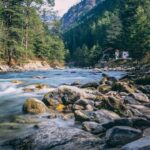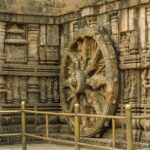Sun, Sand and City Lights : Karnataka, Goa & Mumbai
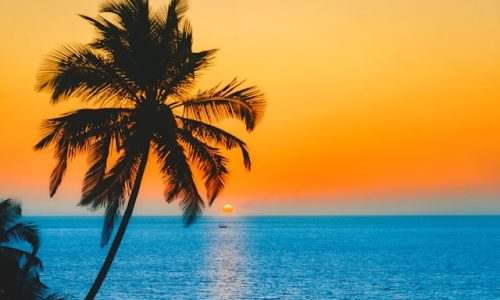
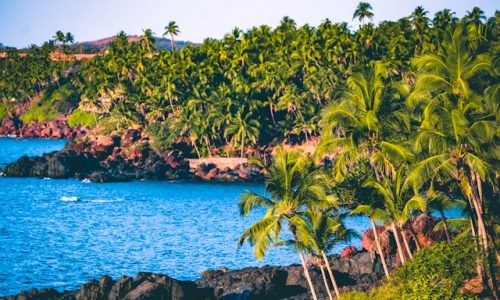
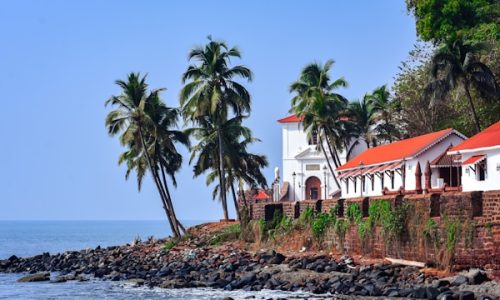

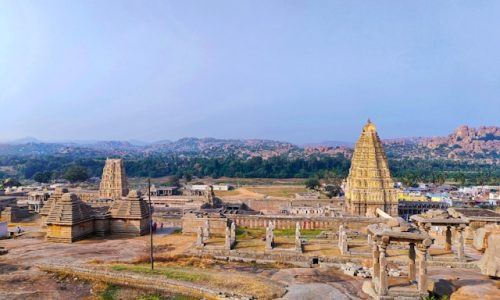

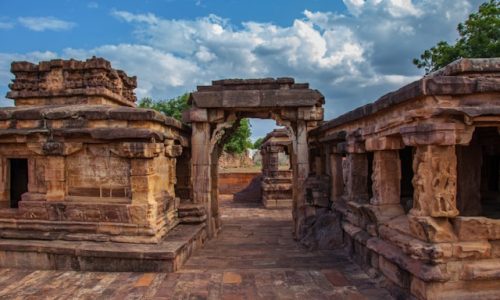
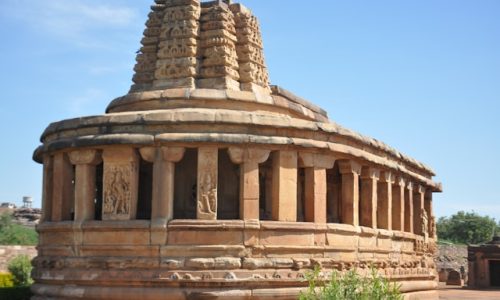
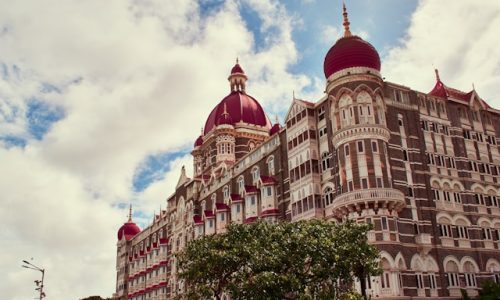



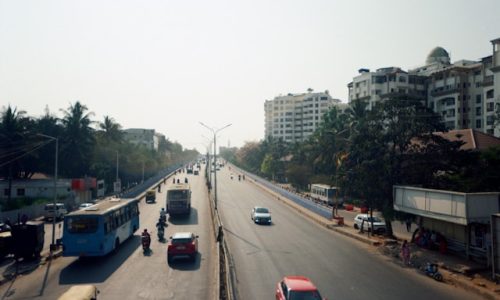
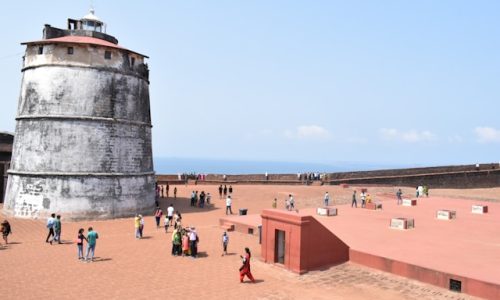
12 Days of South India Bliss ✨ Heritage of Karnataka • Sun-Kissed Goa • Vibrant Mumbai Magic 🌴🌇

- 12 Days, 11 Nights
- Itinerary: : Bangalore – Srirangapatna – Mysore – Somnathpur – Hassan – Belur – Halebeedu – Sravanabelagola - Hampi – Goa – Mumbai
🌟 Small Group Travel Itinerary: Heritage Trails & Coastal Charms 🌟
Embark on a 12-day journey through the heart of South India — a perfect blend of royal heritage, ancient wonders, golden beaches, and bustling cityscapes. Designed for an intimate group of 6–12 participants, this experience offers a seamless mix of culture, history, and relaxation.
📅 Upcoming Travel Dates 📅
03 December -14 December 2025
Journey through the best of South India during this pleasant winter window — from temple towns to tropical shores, and heritage to high-energy city life.
Rate List
Unit Nett Per Person Rates in USD
Each of 06 paying pax (double/twin sharing): 2665 USD
Each of 08 paying pax (double/twin sharing): 2515 USD
Each of 10 paying pax (double/twin sharing): 2375 USD
Each of 12 paying pax (double/twin sharing): 2270 USD
Single Room Supplement: 1200 USD
Services of accompanying Tour Guide from arrival till departure
All ground transportation as detailed in the itinerary using air-conditioned vehicle
Double/twin room with breakfast
Monument entrance fees mentioned in the Tour Itinerary
Domestic Airfare: Goa – Mumbai
1 Day City Tour in Goa
1 Day City Tour in Mumbai
Slum Tour in Mumbai
Mumbai by Dawn Tour in Mumbai
Farewell Dinner on the last evening of the tour in Mumbai
Water bottles during the tour
Currently applicable taxes
Services not included:
Visa application process and fees
International airfares & taxes
Camera and video charges at monuments where applicable
Any expenditure of a personal nature, such as drinks, tips, laundry, telephone charges, etc.
Insurances (travel cancellation insurance, health insurance, etc.)
Any new tax imposed by the government
Any chosen optional activity/program
Highlights Of The Trip
- Cultural Wonders: Explore historic Karnataka sites, including Mysore Palace, Hampi, and ancient temples.
- Scenic Beaches: Relax on Goa’s beautiful beaches.
- Urban Adventure: Experience Mumbai’s vibrant city life and a unique Slum Tour.
- Exclusive Experiences: Private guided tours, domestic flights, and a farewell dinner are included.
- Comfortable Travel: Stay in premium hotels and travel in air-conditioned vehicles.
| CITY | HOTELS | NO. OF NIGHTS | HOTEL CATEGORY |
|---|---|---|---|
| Bangalore | Taj Bangalore | 1 | 5 Star |
| Mysore | Radisson Blu Plaza Hotel | 2 | 5 Star |
| Hassan | The Ashhok Hassan | 2 | 3 Star |
| Hampi | Heritage Resort Hampi | 2 | 4 Star |
| Goa | Zuri White Sands Resort | 3 | 5 Star |
| Mumbai | Taj President | 2 | 5 Star |
*or similar category Hotels.
Check-in / out time is 12 noon at all the hotels. Total Number of Night/s: 12 Nights
IMPORTANT:
- Kindly note that names of hotels mentioned above only indicate that our rates have been based on usage of these hotels and it is not to be construed that accommodation is confirmed at these hotels until and unless we convey such confirmation to you. In the event of accommodation not becoming available at any of the above mentioned hotels we shall book alternate accommodation at a similar or next best available hotel and shall pass on the difference of rates (supplement/reduction whatever applicable) to you.
- Our offer is based on usage of base category rooms at the mentioned hotels (unless specified otherwise) and if this category of rooms is not available we shall try to confirm accommodation in next available higher category of rooms and shall advise supplementary cost involved while conveying the status.
ITINERARY
Arrival in Bangalore.
Upon arrival you will be greeted at the airport and transferred to the hotel.
BANGALORE – Bangalore is the capital of the Indian state of Karnataka. Popularly known as the Garden City and Silicon Valley of India, Bangalore is a techie's paradise and boasts the highest concentration of IT companies in the country. Indian technology organizations ISRO, Infosys, HAL etc., have their headquarters in the city. Demographically divers,e Bangalore is the second fastest growing major city in India.
Overnight at the Hotel in Bangalore.
After breakfast at the hotel, take a short city tour of Bangalore.
The city is an example of traditional and modern IT technology. Visit the magnificent Bull Temple and the Lal Bagh Botanical Garden and have a photo stop at Vidhan Soudha. Vidhan Soudha is the seat of the Karnataka state legislature.
After the sightseeing, proceed to Mysore. On the way, you will visit Srirangapatna.
Srirangapatna is located around 20 km from Mysore and was the headquarters of ruler Tipu Sultan. In 1784, Tipu Sultan built a summer palace in the Mughal style. The almost two-story building made of deep wood stands on a square platform in the middle of an ornamental garden.
After the sightseeing, proceed to Mysore.
Mysore is known as the “Cultural Capital of Karnataka”. It is a picturesque city in Karnataka and is also the second largest city in the state after the capital, Bangalore. A trip to Mysore is always an enriching experience as one comes across the rich culture, heritage, glorious history, and breathtaking sights along with the friendly and hospitable people.
Upon arrival, check in to your hotel.
Overnight at the Hotel in Mysore.
After breakfast at the hotel, have a city tour in Mysore.
First, have an excursion to Somnathpur and visit the Chennakeshawa Temple.
The Chennakesava Temple is dedicated to Lord Vishnu and was built by a general of Hoysala, King Narasimha III. The temple is a prime example of Hoysala architecture. The temple's walls are intricately carved with Hindu theological iconography and feature extensive friezes depicting Hindu texts such as the Ramayana, the Mahabharata, and the Bhagavata Purana.
Later visit the Mysore Palace, which is considered one of the most beautiful in India and combines Hindu, Indo-Islamic, Rajput, and European architecture.
As you stroll through the flower and spice markets of Devaraja Market, breathe in the multifaceted scents and let yourself be intoxicated by the intense colors. The tour ends at Chamundi Hill with a magnificent view of the entire city and a visit to Chamundi Temple.
Overnight at the Hotel in Mysore.
After breakfast in the Hotel, drive further to Hassan.
Enroute visit Shravanabelagola.
Famous for its monumental statue of Gommateshvara Bahubali, standing majestically at 57 feet, this historic site is a testament to Jain architectural and spiritual heritage. Set against the backdrop of rolling hills and lush landscapes, Shravanabelagola offers breathtaking views and a serene atmosphere. Explore the intricate carvings, climb the 600 steps to the statue, and immerse yourself in the tranquil ambiance of this sacred destination.
Later drive further to Hassan.
Nestled in the heart of Karnataka, Hassan is a city known for its rich history and cultural heritage. It serves as a gateway to several ancient temples and architectural marvels, including the stunning Hoysala temples in Belur and Halebidu.
On arrival in Hassan, transfer to the Hotel.
Overnight at the Hotel in Hassan.
After breakfast in the Hotel, have an excursion to Belur and Halebeedu.
Belur
Belur is a historical town in Karnataka, renowned for its architectural marvels. At the heart of this heritage site is the Chennakesava Temple, an exquisite example of Hoysala craftsmanship. The temple is celebrated for its intricate sculptures, detailed carvings, and stunning architectural design. Marvel at the elaborate depictions of gods, goddesses, and mythological scenes that adorn the temple's walls. Belur, with its serene surroundings and rich cultural legacy, offers a captivating experience for history and art enthusiasts alike.
Halebeedu
Discover the Hoysaleswara Temple in Halebeedu, an architectural gem of the Hoysala Empire. This grand temple is renowned for its intricate and elaborate carvings that showcase the peak of Hoysala artistry. The temple's outer walls are adorned with detailed sculptures of deities, mythological scenes, and ornate designs, reflecting the exquisite craftsmanship of the era. The two main sanctums, dedicated to Lord Shiva, are surrounded by a beautifully landscaped courtyard.
Rest of the day is at leisure in Hassan.
Overnight at the Hotel in Hassan.
After breakfast, drive further to Hampi.
It’s a day to drive around 6 hours to reach the town Hampi.
Hampi
Hampi, a UNESCO World Heritage Site, is a historical marvel that once served as the vibrant capital of the Vijayanagara Empire during the 14th to 16th centuries. Renowned for its majestic ruins and stunning landscapes, Hampi features a wealth of ancient temples, palaces, and monuments that highlight its grandeur and architectural brilliance. The site is famed for its iconic structures like the Virupaksha Temple, the Hampi Bazaar, and the Stone Chariot. Its dramatic terrain, with boulder-strewn hills and verdant riverbanks, adds to the mystical charm of this historic city. Hampi's ruins, scattered across an expansive area, offer a fascinating glimpse into a bygone era of cultural and artistic flourishing.
On arrival in Hampi, transfer to the Hotel.
Rest of the day is at leisure in Hampi.
Overnight at the Hotel in Hampi.
After breakfast, visit the following in Hampi:
Virupaksha Temple
Virupaksha Temple in Hampi is part of the Group of Monuments at Hampi, designated as a UNESCO World Heritage Site. The temple is dedicated to Virupaksha, a form of Shiva, as the consort of the local goddess Pampadevi, who is associated with the Tungabhadra River. The temple is the main center of pilgrimage at Hampi and has been considered the most sacred sanctuary over the centuries. It remains intact among the surrounding ruins and is still used for worship.
Vittala Temple
Vittala Temple dates back to the 15th century and was built by King Devaraya II, one of the rulers of the Vijayanagara Empire. The temple was later expanded in the 16th century. The Vittala Temple is dedicated to an incarnation of Vishnu, Lord Vittala. It features amazing stone structures like a stone chariot and musical pillars. The temple is one of the major attractions of Hampi.
Krishna Temple
The Krishna Temple is dedicated to Balakrishna, the form of Lord Krishna when he was an infant. The temple is also a part of the Group of Monuments, which is designated as a UNESCO World Heritage Site. This temple was built by Krishnadevaraya of the Vijayanagara period in 1513 A.D. He erected this temple in honor of his victory in battle and the annexure of Utkala (currently known as Orissa).
Badavilanga Temple
Badavilinga Temple is a wonderful temple in Hampi dedicated to Lord Shiva. The Hindu deity Shiva is worshipped in the form of a Linga in this temple. The beautiful Linga is made of black stone and stands 3 meters tall. The name Badavilinga is a combination of two words – Badva (meaning poor) and Linga (representing Shiva). Legend has it that the Shiva Linga was commissioned by a poverty-stricken peasant woman, which is why the temple came to be known as Badavilinga Temple.
Lakshmi Narasimha Temple
The Lakshmi Narasimha statue is one of the most imposing sculptures found in the ruined town of Hampi. It is the largest monolith statue in Hampi. The statue and the temple housing it were built in 1528 A.D. The temple is dedicated to Lord Narasimha, one of the ten avatars of Lord Vishnu, and Goddess Lakshmi. The original sculpture had a small figure of Goddess Lakshmi sitting on Narasimha’s lap. The statue was vandalized during the Mughal raid in 1565 A.D., which led to the fall of the Vijayanagara Empire. The limbs of Narasimha’s statue were broken, and the figure of Lakshmi was separated. The damaged statue of Lakshmi now resides at the Archaeological Museum at Kamalapura.
Overnight at the Hotel in Hampi.
After breakfast in the Hotel, drive further to Goa.
Goa: Variously known as "Pearl of the Orient" and a "Tourist Paradise," the state of Goa is located on the western coast of India in the coastal belt known as Konkan. The magnificent scenic beauty and the architectural splendors of its temples, churches, and old houses have made Goa a firm favorite with travelers around the world. Having been the meeting point of races, religions, and cultures of the East and West over the centuries, Goa has a multi-hued and distinctive lifestyle quite different from the rest of India. Hindu and Catholic communities make up almost the entire population, with a minority representation of Muslims and other religions. The vast green expanse of the Sahyadri mountain range ensures that Goa has an abundance of water. The sea and rivers abound in seafood—prawns, mackerels, sardines, crabs, and lobsters—which are popular with both locals and visitors.
On arrival in Goa, transfer to the Hotel.
Rest of the day is at leisure in Goa.
Overnight at the Hotel in Goa.
After breakfast, visit the following in Goa:
Basilica of Bom Jesus
The Basilica of Bom Jesus was built in the 16th century. Flaunting impressive Jesuit and Baroque architecture, this basilica was labeled as a World Heritage Monument. Tiny, ornate Latin and Portuguese inscriptions are carved onto the gilded pillars, walls, and altar of the church, reminding visitors of Goa's rich historical and cultural past. The body of St. Francis Xavier is also buried in one of the chapels here.
Tomb of St. Francis Xavier
Within the Basilica of Bom Jesus, there lies the tomb of the revered Portuguese evangelist, St. Francis Xavier. During his stay in Goa, he is said to have nursed the sick, opened numerous churches, and converted thousands to Christianity. He later traveled to the Far East, continuing his evangelical and missionary duties. Although he died on a tiny island in China, his body was brought back to Goa.
Se Cathedral
Se Cathedral, a 16th-century edifice, is the largest church in Asia and is still operational! With high ceilings, intricate mosaic work, and wooden carvings, this church is one of Old Goa's most richly decorated buildings. Dedicated to St. Catherine, this cathedral was built to commemorate the victory of Afonso Albuquerque and belongs to the Archbishop of Goa today. Se Cathedral is laid out in the standard cruciform shape, and above the altar, there are gilded panels depicting scenes from St. Catherine’s life.
Fountainhas
The Heritage Walk through Fontainhas, a small Latin Quarter in Panjim, is a must for anyone visiting Goa. Colorful houses line the winding streets, seeming to come straight out of a child’s coloring book. A walk through Fontainhas will not only prove enchanting and refreshing but is also a great way to learn more about Goa’s rich cultural past.
Overnight at the Hotel in Goa.
Today is the day at leisure in Goa.
Overnight at the Hotel in Goa.
On time, transfer to the Goa Airport to board the flight to Mumbai.
Upon arrival, meet, assist, and transfer to the Hotel.
MUMBAI – The city that never sleeps! Pulsating, Alive, On the Move, Vibrant, Fun — this is Mumbai, or as it is still frequently referred to, Bombay. The most modern city in India, it captures the spirit of the changing pace set by liberalization and modernization. It is better known as the Economic Capital of India.
Once a cluster of seven islands, Mumbai was presented to King Charles II in 1661 as part of the dowry when he married Princess Catherine de Braganza of Portugal.
In the afternoon, visit the following in Mumbai:
Gateway of India
The Gateway of India was designed by Scotland-born architect George Wittet. Sporting exquisite Mughal-style design elements, this imposing basalt arch overlooks the Mumbai Harbor.
Victoria Terminus
Have a photo stop at the remarkable Victoria Terminus. It was built during Queen Victoria's Golden Jubilee year. It is an extraordinary conglomeration of domes, spires, Corinthian columns, and minarets in a style described by journalist James Cameron as “Victorian-Gothic-Saracenic-Italianate-Oriental-St. Pancras-Baroque.” The first train in India left from this station in 1853; today, half a million commuters use the station every day.
Marine Drive
Built in 1920, Marine Drive runs along the shoreline of the Arabian Sea from Nariman Point to the foot of Malabar Hill. It passes Chowpatty Beach along the way. It's one of Mumbai's most popular romantic spots, and the sunset view is amazing. Tourist brochures often refer to it as the Queen's Necklace, because of the dramatic curve of its streetlights at night.
Mani Bhawan
Mani Bhawan is a memorial dedicated to the Father of the Nation, Mahatma Gandhi. He used to stay at House No. 19 called Man Bhavan from time to time between 1917 and 1934. He was arrested here in 1932 and taken off for one of his many prison terms. The building now contains a pictorial gallery, a 20,000-volume research library, a film and recording archive, and a set of dioramas on the Mahatma's life.
Overnight at the Hotel in Mumbai.
After breakfast, visit the following in Mumbai:
Mumbai by Dawn (start at 05:30 AM)
Experience Mumbai when the city is waking up. The breeze is cooler, the streets are less crowded, and the locals begin their morning rituals. This early morning tour takes you to the clamorous and chaotic docks, where you can understand the life and times of the Koli fisher-folk (the original inhabitants of Mumbai). Witness the arrival and grading of fish and the unique fish auction for the famous Bombay Duck. You'll also observe vendors sorting newspapers in seven different languages, milkmen driving past with canisters, freshly baked bread being delivered, and the color and fragrance of the flower market. This bustling atmosphere of the city is best experienced in the early morning. The tour ends with a walk across a cricket ground, where you can learn about the game that has captured the hearts of a billion people.
The tour starts at 05:30 AM and finishes around 08:30 AM.
Prince of Wales Museum
The Prince of Wales Museum is now known as the Chhatrapati Shivaji Maharaj Vastu Sangrahalaya. The museum was inaugurated in 1923 after its foundation stone was laid by George V in 1905. The museum has three primary sections: Art, Archaeology, and Natural History. It houses some of the finest collections, ranging from Indus Valley relics to artifacts from the Gupta and Maurya periods. (Note: The museum is closed on Mondays.)
Photo Stop at Dhobi Ghat
One of the unique features of Mumbai is Dhobi Ghat, a traditional open-air laundry area where clothes are washed by the dhobi (laundryman). The clothes are soaked, beaten on flogging stones, boiled in vats of starch, hung to dry, ironed, and then returned to their owners. This is a fascinating site to witness the hard work and organization behind Mumbai’s traditional laundry service.
Dabba-Wallahs
The Dabba-Wallahs are the members of the Mumbai Tiffin Box Suppliers Association. Every day, about 4,000 Dabba-Wallahs deliver fresh, home-cooked food from 100,000 suburban kitchens to offices in downtown Mumbai. The tiffin boxes are carried from homes and stacked on carts and bicycle handlebars to deliver meals to hungry office workers. The system is so efficient that the tiffin boxes rarely get lost and always make their way back home for the next day's delivery.
Slum Tour
Explore Dharavi, one of the largest slums in Asia, and understand why it is considered the beating heart of Mumbai's small-scale industries. Dharavi houses about one million inhabitants, and its industries have an annual turnover of approximately US$ 665 million. Through educational walking tours, you’ll witness various business activities like recycling, pottery-making, embroidery, bakery, soap factory, leather tanning, and more. You will also visit the residential areas, where people from across India live together, creating a microcosm of the country. Diverse religions and cultures are represented through temples, mosques, churches, and pagodas that coexist side by side.
Evening
After dinner, check out from the hotel and transfer to the airport to board your flight back home.
GALLERY / PHOTOS




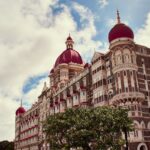
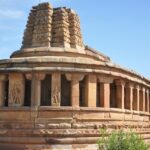
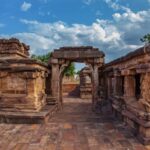

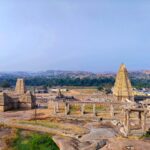
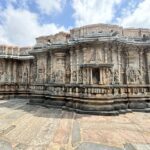
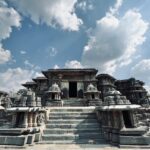

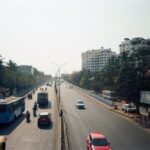
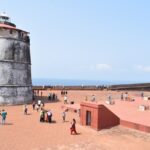
BOOK A CALL BACK WITH AGENT TODAY
MORE PACKAGES
OTHER TRAVEL PACKAGES
Our Latest Blogs
Discover the Magic of India: A First-Timer’s Guide
Welcome, Traveler, to the threshold of an extraordinary adventure. India,…
The Ultimate India Travel Guide: 10 Bucket List Adventures for Every Traveler
India is a land of timeless wonders, offering travelers a…
10 Best UNESCO World Heritage Sites in India: A Journey Through Time with Dreamlike India Holidays
10 Best UNESCO World Heritage Sites in India: A Journey…
Unveiling the Unexpected Perks of Summer Travel in India
Summer in India: Unveiling the Hidden Gems of Off-Season Travel…
FAQs
What is the duration of the tour?
What is included in the tour package?
What are the key highlights of this tour?
Is the tour suitable for all age groups?
What kind of transportation is provided during the tour?
Are meals included in the tour package?
What should I pack for this tour?
Are there any specific health or vaccination requirements?
How do I book this tour?
What is the best season to visit Karnataka, Goa, and Mumbai?



